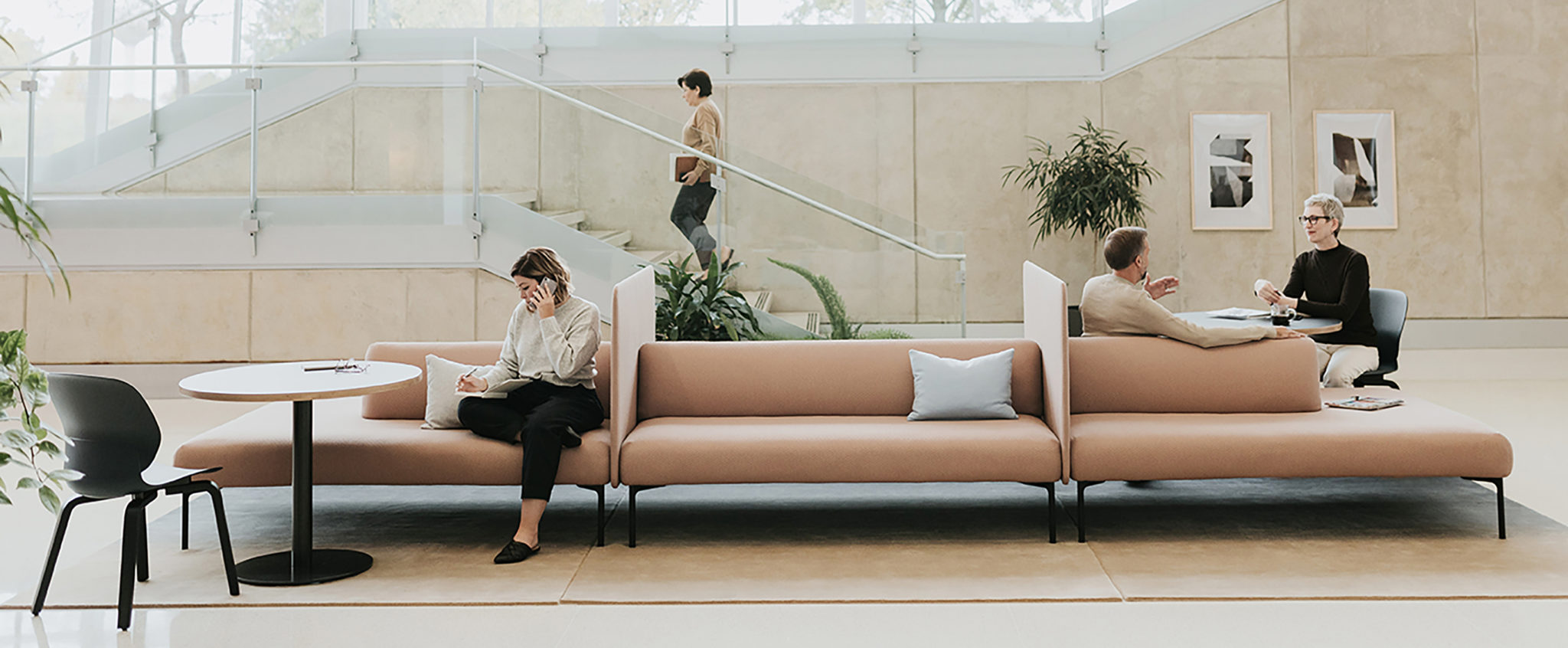05.16.22
8 Trends in the Workplace Today
Uncategorized
Factors influencing business have never been more complex than today. The key to how organizations and their leaders make business decisions is to first gather relevant information and input. That’s why we continually track shifts in culture, technology, and other trends in the workplace. Keep reading for 8 trending topics we’ve identified that now influence how business gets done.

1. Turning Competitors into Strategic Partners
Co-opetition is a new word describing how some businesses are staying ahead by cooperating with competitors. This strategic move saves time, money, and resources. For example, pandemic supply chain snarls led some retailers to team up and share shipping capacity to keep their inventory moving.
Co-opetition is also advancing EV (electric vehicle) production worldwide. Ford and Volkswagen forged a collaboration to produce EVs for the European market while General Motors and Honda recently announced a partnership to create more affordable EVs for the global market.

2. Merging Physical and Virtual Worlds
The merging of physical and virtual worlds is more of an evolution than a revolution. Incremental advances in technology are steadily changing how and where we work.
Just imagine putting on a VR (virtual reality) headset to visit a manufacturing plant 7,000 miles away.
Or, consider how the car-shopping experience will change when buyers can visit multiple virtual showrooms from the comfort of their living room sofa and take virtual test drives.
Meta’s multi-billion-dollar investment in VR for the workplace has immense potential to change how we hold meetings, collaborate remotely, and provide training. Organizational culture is sure to change when virtual spaces are shared by everyone from senior leaders to frontline workers.
One challenge facing developers of VR technology is how to embed responsibility into the systems so they can avoid some of the pitfalls faced by social media. Those that can effectively and safely blend the physical and virtual worlds will have a profound impact on the way businesses and consumers interact, and how products and services are used.

3. Untethering Collaboration from Set Times
While asynchronous collaboration isn’t new, the pandemic paved a wider road for more people to do work on their own schedule. As a result, we’re seeing more advanced tools for task boards, document sharing, and idea sharing. Use of these tools is helping people work more efficiently, as well as relieve some of the stress, fatigue, and anxiety. In this sense, asynchronous collaboration provides the ability to gain more diverse and global input from people in different time zones and others who may not feel comfortable in a group sharing situation.

4. Attracting Talent with Well-Designed Workplaces
In our work from anywhere world, attracting talent is more competitive than ever. Savvy employers are designing their workspaces with employee preferences in mind, and to attract and retain top talent. Today’s must-have amenities include flexible indoor and outdoor spaces, hospitality spaces, bookable workspaces, quiet spots for deep focus, fitness facilities, and wellness rooms.
5. Giving Employees Freedom to Innovate
Many employers are tapping into the desire of employees to have more autonomy by moving toward intrapreneurship. Like entrepreneurs who develop innovative ideas, intrapreneurs work on leading-edge projects. However, they work within an established company rather than starting their own business. When highly motivated employees are given the freedom and resources to develop projects as an entrepreneur would, the company benefits from innovation that can help it stay ahead of the competition.

The physical workplace is changing—just as it always has—and it is not going away. Organizations are shifting spaces to support new activity-based patterns and behaviors, as well as spontaneous interaction, while offering more user control and flexibility. Space utilization trends show a reduction in square feet for individual workspaces, but an increase in spaces for group work, collaboration, and restoration.
7. Comfort with Unvarnished Reality
The past few years have allowed us to become comfortable with the unvarnished reality of the world and each other. There is a real thirst for “rawthenticity.” People want to see what’s authentic and real—flaws and all. This is evidenced by the surge in un-retouched imagery, body-positive models, and spin-free messages.
Instead of focusing on polished images of perfection, authenticity is the key to engagement in building relationships, as it helps build trust.

8. Increased Corporate Social Responsibility
The bar has been raised for organizations that practice corporate social responsibility. Environmental, social, and governance (ESG) strategies help organizations plan and manage increased climate risks, as well as address social concerns.
Having a solid ESG strategy in place helps attract investors and consumers who scrutinize ESG criteria when deciding where to use their money. People want to know exactly where organizations stand when it comes to issues like sustainability, employee relations, and political lobbying. More importantly, investors and consumers want to see corporate actions that align with their own values.
This article was originally posted by Haworth

